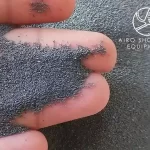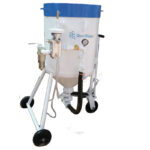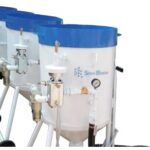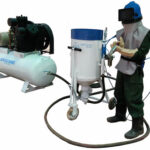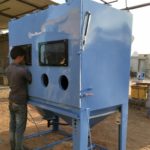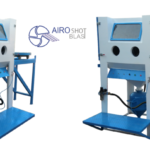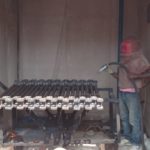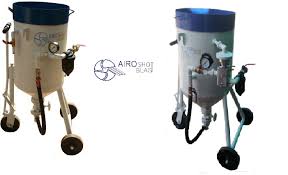
Sand blasting machine use a method that propelling fine, abrasives elements at high velocities to produce a number of results. It can be used for cleaning, de burring, removing paint and coatings, shot-peening, and/or other methods for finishing or improving the surface on a number of different materials.
When it comes to industry professionals, the abrasive blasting machine is the key piece of equipment for sandblasting. Contractors, facility owners, shipyards, rail yards, and separate industrial and mobile applicability all require high-quality, durable pressure blasting machine for cleaning, corrosion control, and surface equipment. These multi-purpose machines are important and need a certain degree of skill and safety regards to operating, but the mechanisms of the machine itself are comparatively simple enough to understand.
Sandblasting Machine Operation:
Sand blasting machine is a method of propelling abrasive using compressed gas or pressurized liquid as the propellant. There are numerous generic words for this application usually compared to the abrasive media used. General terms include sandblasting, shot blasting, bead blasting, and soda blasting.
Sand blasting machine working principle:
This is the process of blowing fine sand at high pressure with the help of compressed air that is passed through the sand blasting nozzle at a very high velocity.
The sequences of operations in sandblasting are as follows:
- Loading of abrasives into the cylinder.
- The second step is focusing on pressurized air through the nozzle on the surface to be sandblasted.
blasting Nozzle along with controlling the pressure and velocity also helps in creating a trajectory for the blast. Pressure blast systems are the systems that are ten times more efficient and faster than the sandblasting machine. Pressure blasters Pressure blast systems are the methods that are ten times more efficient and more responsive than the suction blasters. They are also easier to use. They consist of a large container comprising of silica sand under high pressure. A gun is joined to the upper division of the container with the advice of a hose that can bear the abrading effects of sand. These sandblasting machine is moderately cheap and is more likely to find. They consist of three main parts.
A sandblasting machine with two hoses of which one hose is connected to the bottom of the handle and the other hose is connected to the lower side of the barrel. It has a repository of loose sand. Some type of container or container is formed by this type. As the gun is fired, the air produces a suction that pulls the sand into the gun. Now sand can be reused by collecting it and placing it back into the reservoir.
Types of sand blasting machine
The abrasive media is collected in the pressure vessel then sealed. It is metered into the blast hose and dispatched by the compressed gas into the blast nozzle. It is typically used to produce a surface profile when the frictional heat of dry blasting would destroy the part.
hydro-Blasting: It is generally known as water blasting, is a natural abrasive blasting work because it is very effective and, in most cases, will only require one operator. In this process, water is used to remove old paint, chemicals, or buildup without damaging the previous surface. This method is perfect for cleaning internal and external facades because the operator is frequently able to send the current of water in places that previously were deemed unreachable
Blast Room: it has three of the four elements of a blast cabinet. Most blast rooms possess recycling methods changing from manual recycling to full reclaim levels that move the abrasive pneumatically or automatically to a machine that cleans the abrasive previous to recycling.
Micro-Abrasive Blasting: Micro-abrasive blasting uses smaller nozzles to produce a fine current of abrasive accurately to either a small part of a small section on a larger part. Mostly, the area to be blasted is from about 1 mm to only a few cms at most as abrasive blasters with larger nozzles are faster for larger areas. Micro-abrasive blasting works media with scrap sizes from 10 micrometers up to about 150 micrometers and usually higher pressures than most of the larger blasters 40 psi to 150 pounds per square inch deliver sufficient energy to these small particles.
